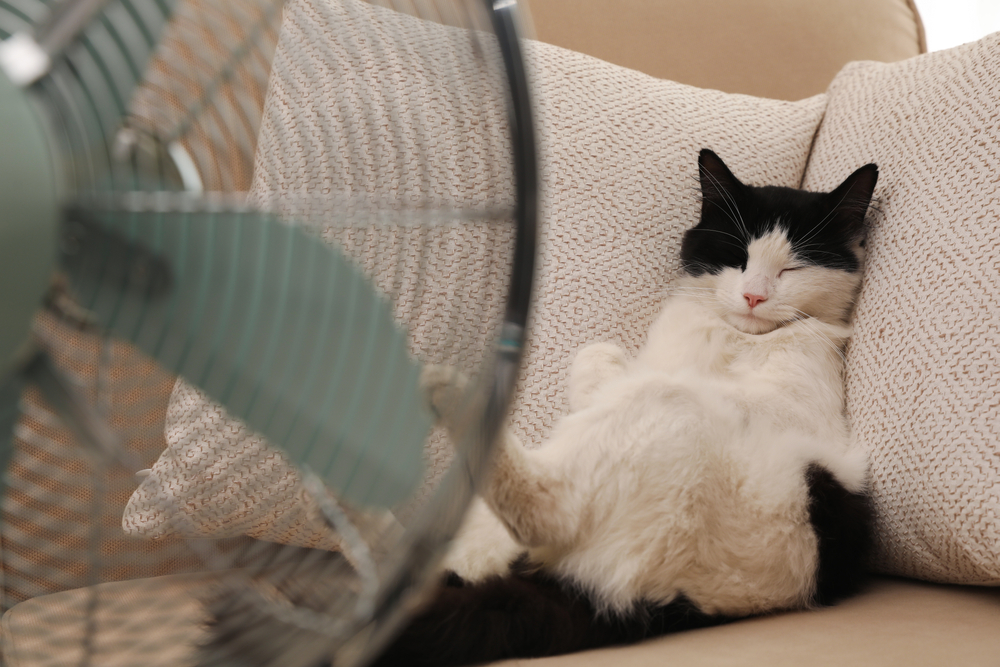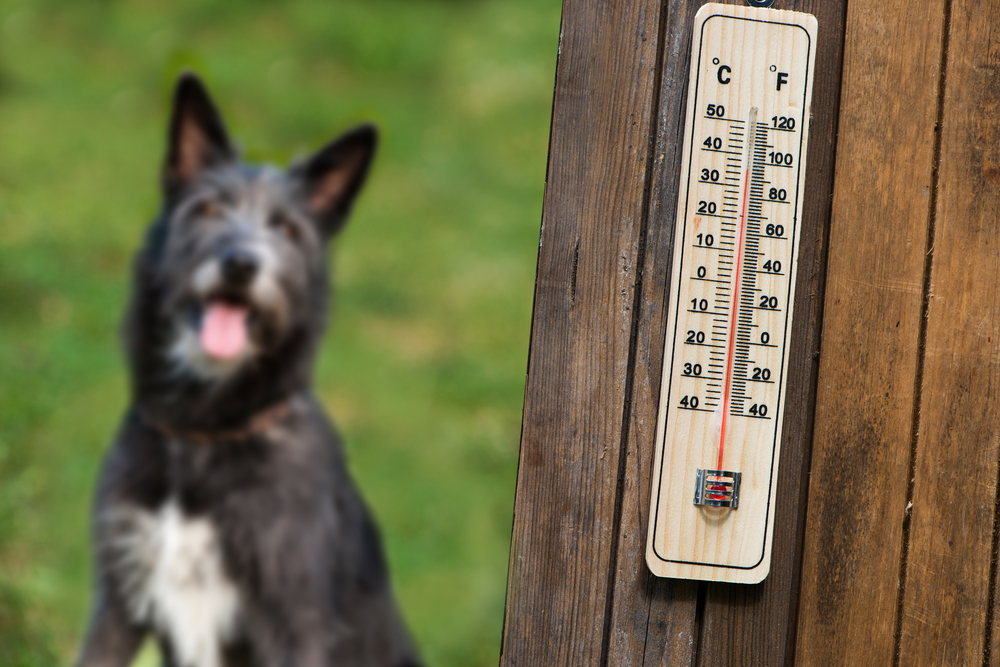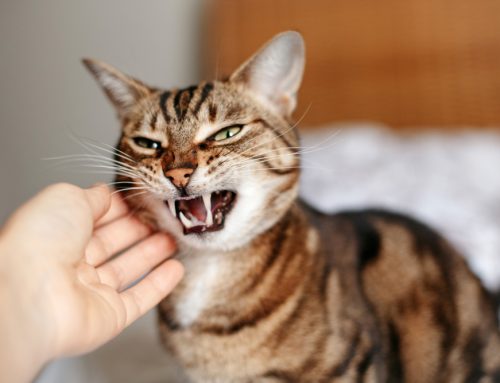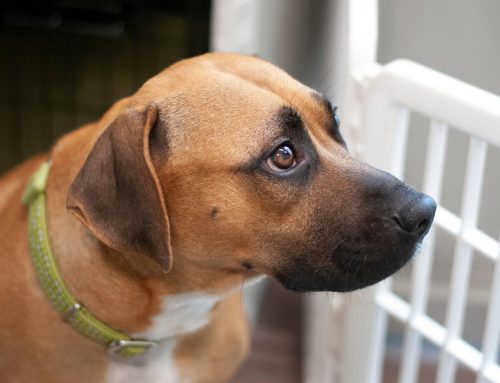As you soak up the sun outdoors with your pet, remember that they need special monitoring during summer’s hot temperatures. Pets can’t tell us when they’re thirsty, tired, or overheated, so you must proactively ensure their comfort and safety in the heat. Our Town & Country Animal Hospital team answers your frequently asking questions (FAQs) about pet heat safety, offering you practical tips to help your four-legged friend beat the heat.
Question: Do pets sweat?
Answer: Sweating is not pets’ primary way to release body heat. Sweat evaporates off of a person’s skin, but a pet’s fur greatly limits their sweat’s effectiveness. While dogs have some sweat glands in their paw pads, the small surface area is insufficient for regulating their body temperature. Panting is pets’ most effective way to cool down and regulate their body temperature. When your pet rapidly breathes in and out, which causes moisture to evaporate from their tongue, mouth, and lungs, their body temperature decreases. Panting is normal to an extent, but excessive panting is often the first sign of heat exhaustion.
Q: Are some pets more susceptible to overheating?
A: Yes, certain types of pets are more susceptible to overheating. Consider these factors:
- Age — Puppies, kittens, and senior pets may have difficulty regulating their body temperatures, making them more vulnerable to overheating.
- Breed – Brachycephalic (i.e., flat-faced) dog and cat breeds, such as bulldogs and Persian cats, are more susceptible to overheating because of their unique facial anatomy. Brachycephalic breeds have shortened nasal passages and smaller airways, which reduce their ability to move air in and out quickly, and they have difficulty cooling down efficiently through panting. Their respiratory constraints mean brachycephalic breeds can quickly overheat in moderate temperatures if they become overexerted. If you have a brachycephalic pet, closely monitor their breathing, particularly during warm weather, and prevent them from exercising intensely.
- Weight — Body fat acts as an insulator, and while this can be beneficial in colder weather, extra pounds can cause your pet to retain more heat when temperatures soar. An overweight or obese pet has excess fat layers that can make cooling down difficult. Furthermore, an overweight pet has to work hard to move around those extra pounds, which can result in increased exertion and subsequently more body heat production. This extra effort can cause an overweight or obese pet to overheat more rapidly than a lean pet.
- Health — A pet with chronic health problems, such as a respiratory or heart condition, is more sensitive to heat, and you should closely monitor them for overheating signs.
Q: What happens when a pet overheats?
A: When a pet overheats, their normal bodily functions can start to break down, which can lead to heat exhaustion and a more serious, life-threatening condition such as heatstroke. Keep an eye out for your pet’s heat-related health condition signs:
- Heat Exhaustion — Dogs’ and cats’ normal body temperature usually ranges from 99.5 to 102.5 degrees. When a pet’s body temperature rises higher than the normal range, they may begin to exhibit heat-exhaustion signs such as excessive panting, drooling, increased heart rate, coordination problems, vomiting, and lethargy.
- Heatstroke — If a pet’s body temperature continues to rise and exceeds 104 degrees, their condition may progress from heat exhaustion to severe and potentially fatal heatstroke. Pets’ heatstroke signs include bloody diarrhea or vomit, seizures, and collapse. Heatstroke can cause organ failure and is a medical emergency.
If your pet exhibits overheating signs, you must act quickly. Move them to a cool, shaded area, provide water, and cool them down gradually with cool—not cold—water. Once you’ve started cooling efforts, immediately contact our Town & Country Animal Hospital team.
Q: How can I protect my pet from overheating?

A: The most effective way to ensure your pet avoids overheating and heatstroke is to prevent their body temperature from rising higher than the normal range. To keep your pet from experiencing a heat-related emergency this summer, follow these tips:
- Keep your pet hydrated — Ensure your pet always has access to fresh, cool water. Remember to refill their water bowl throughout the day.
- Create shade for your pet — When your pet spends time outdoors, make sure they have plenty of shade available where they can take refuge from the sun.
- Limit activity during the day’s peak heat hours — To avoid the midday’s intense heat, schedule walks and playtime during the cooler hours such as in the early morning or late evening.
- Never leave your unattended pet in a parked vehicle — The temperature inside a parked vehicle can skyrocket within minutes. Cracking open the windows is not enough to keep the temperature at a safe level. Your pet is safest in your air-conditioned home.
- Protect your pet’s paws — Hot pavement can burn your pet’s paw pads. Test the pavement with your hand before allowing your pet to step onto the surface. If the pavement is too hot for your hand, it’s too hot for your pet’s paws.
- Provide cooling aids — To help your pet maintain a cooler body temperature when the temperatures soar, give them a cooling mat, or outfit your four-legged friend in a cooling vest or bandana.
The best approach to helping your pet avoid a heat-related emergency is to ensure their body temperature stays within the normal range. Follow these pet heat-safety tips, and schedule your pet’s wellness exam with our Town & Country Animal Hospital team so we can identify any conditions that might increase their overheating risk.







Leave A Comment